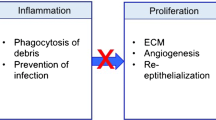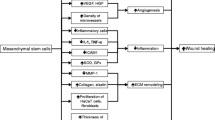Abstract
Background: Local cellular and humoral defense mechanisms play a significant role in combating local bacterial infection. The effectiveness of these mechanisms is directly related to an intact vascular system. The objective of this study was to elucidate the effect of local bacterial challenge on the host tissue microvascular response and nutritive perfusion.
Material and Methods: The hamster dorsal skin fold preparation and intravital microscopy allowed direct visualization of skeletal muscle microcirculation and quantification of microcirculatory and cellular parameters over an observation period of 24 h after bacterial exposition with doses of either 2 × 105 or 2 × 107 CFU (colony-forming units) Staphylococcus aureus Newman.
Results: 2 × 105 bacteria led to a transient activation of leukocytes with an increase in endothelial cell interaction within the first 120 min. Here, the endothelial integrity remained intact, shown by a lack of venular macromolecular extravasation. In contrast, the challenge with 2 × 107 CFU resulted in a marked rise in leukocyte-endothelial cell interaction combined with macromolecular leakage. Dilation of the venular system as well as a drastic reduction in nutritive perfusion became evident. Whereas six of seven chambers in the 2 × 107-group were completely covered by bacteria within 48 h, the group confronted with 2 × 105 cells showed almost intact chambers within the observation period.
Conclusions: The amount of bacteria has a considerable impact on the microvascular system and thus on the pathogenesis of infection. Our observations suggest that there may be a threshold level, whereby the host can tolerate a certain degree of bacterial exposition, but above which the fragile local vascular system collapses. Further dose-related experiments will be needed to clarify this hypothesis. This versatile skin fold model offers perspective in elucidating the pathogenesis of implant-related infection.
Similar content being viewed by others
Author information
Authors and Affiliations
Additional information
Received: January 10, 2001; revision accepted: July 10, 2001
Rights and permissions
About this article
Cite this article
Kraft, C., Hansis, M., Menger, M. et al. Control of Local Bacterial Soft Tissue Contamination by Adequate Microvascular Response is Critically Dependent on the Extent of Bacterial Challenge. Eur J Trauma 27, 199–209 (2001). https://doi.org/10.1007/s00068-001-1101-z
Issue Date:
DOI: https://doi.org/10.1007/s00068-001-1101-z




